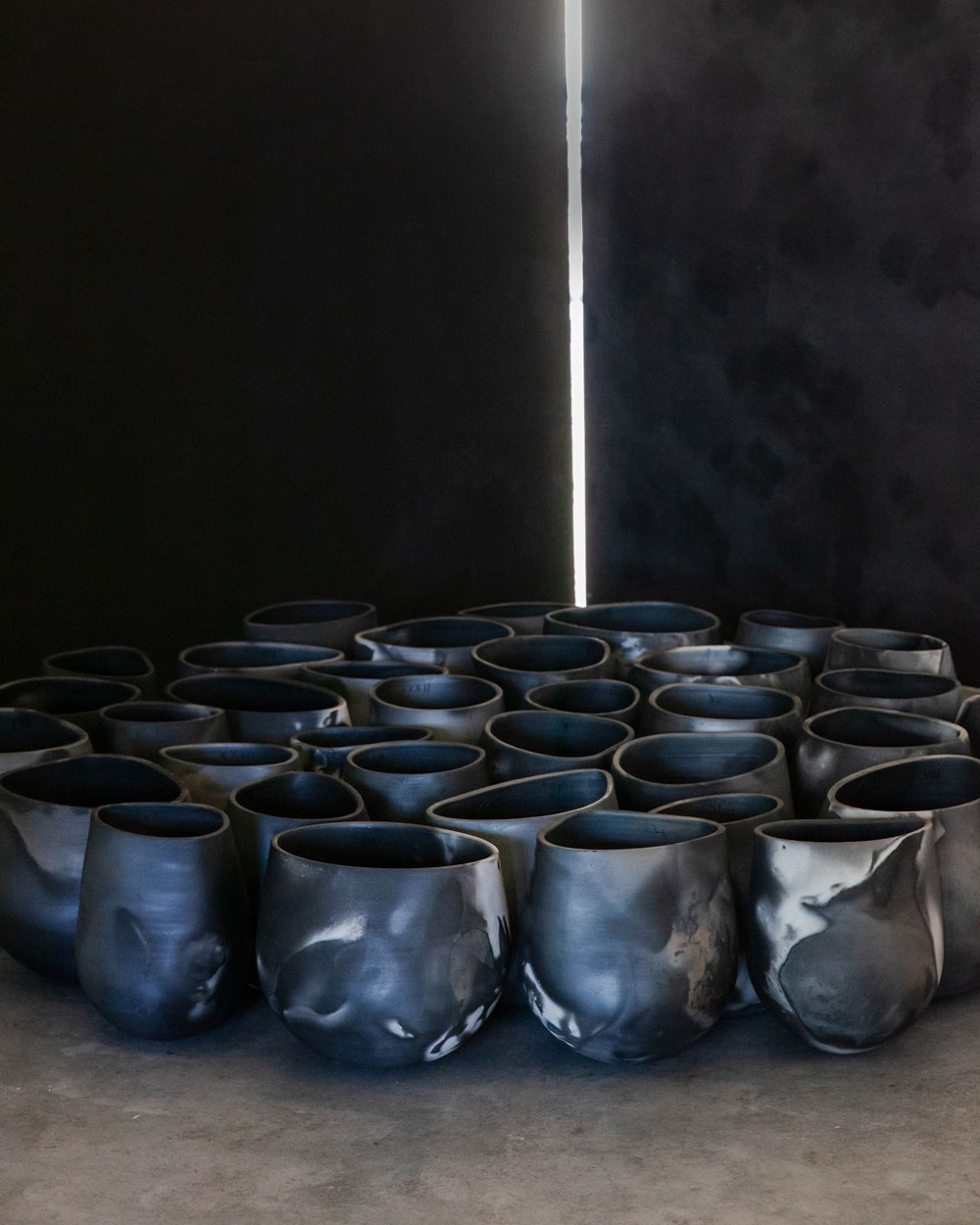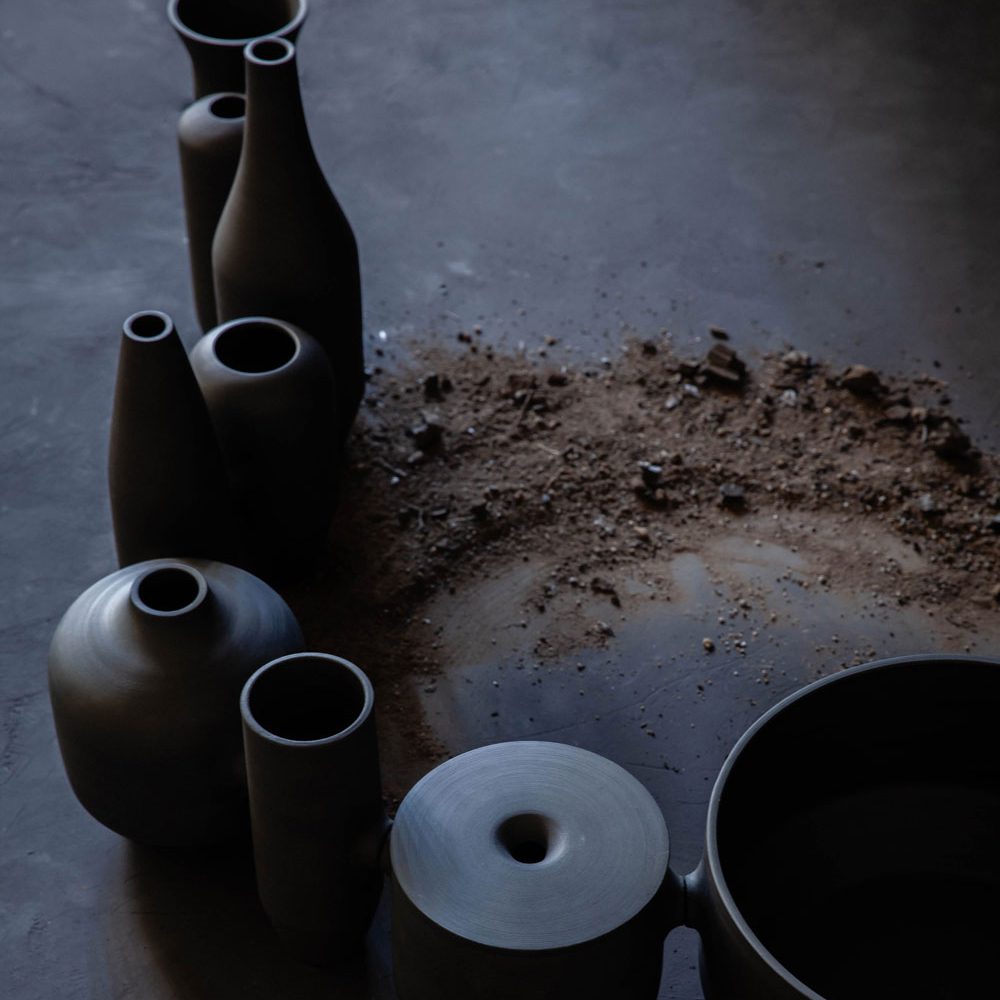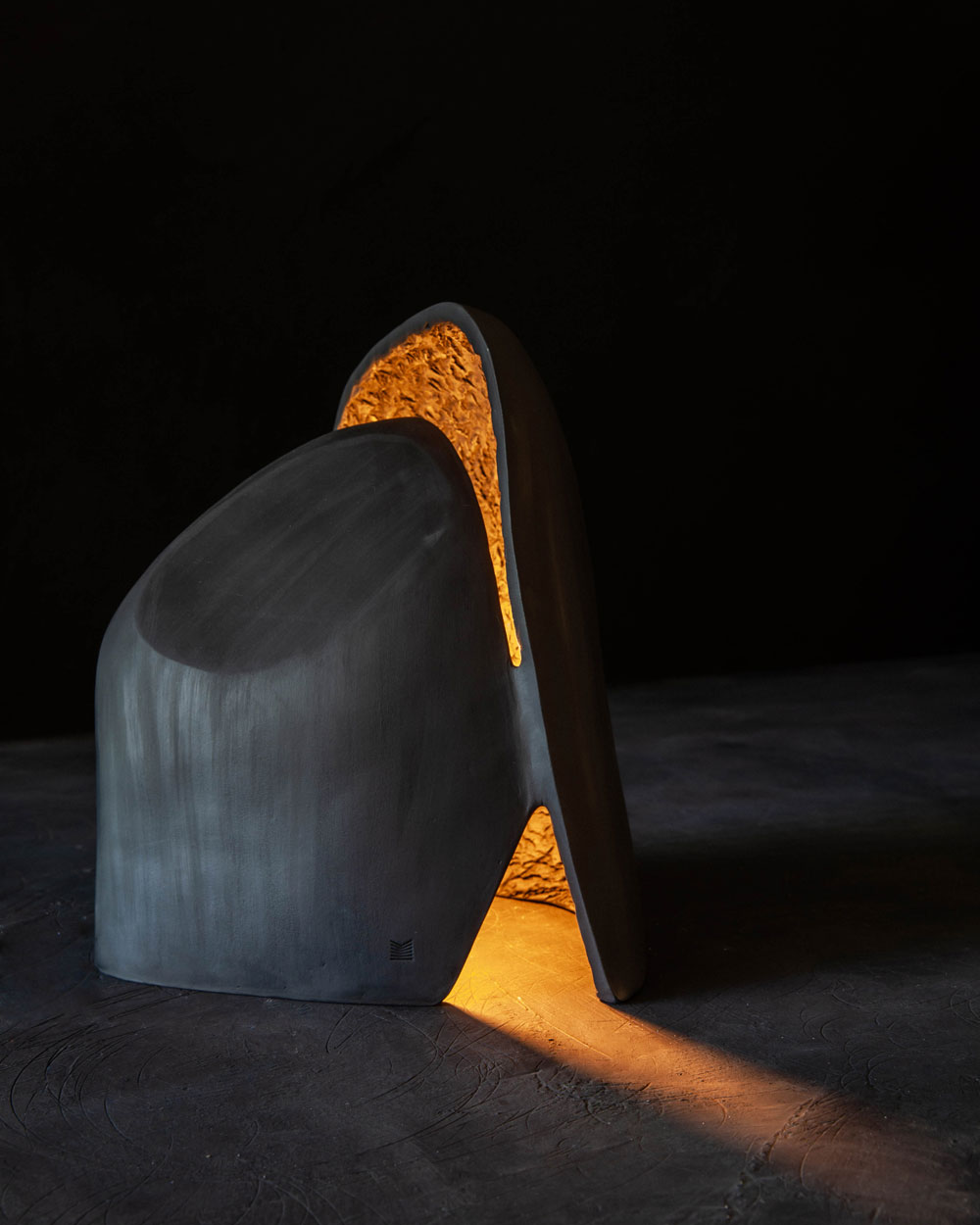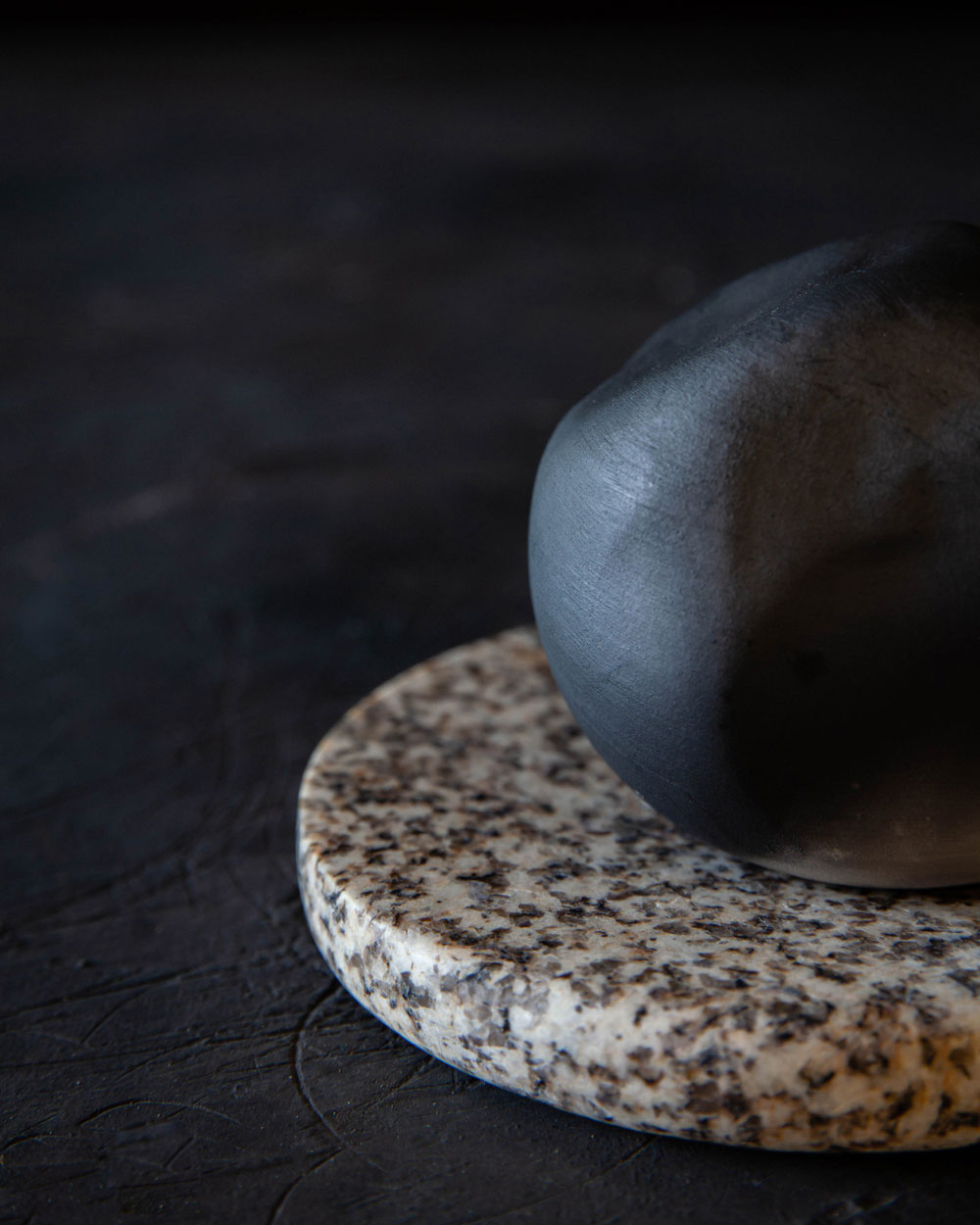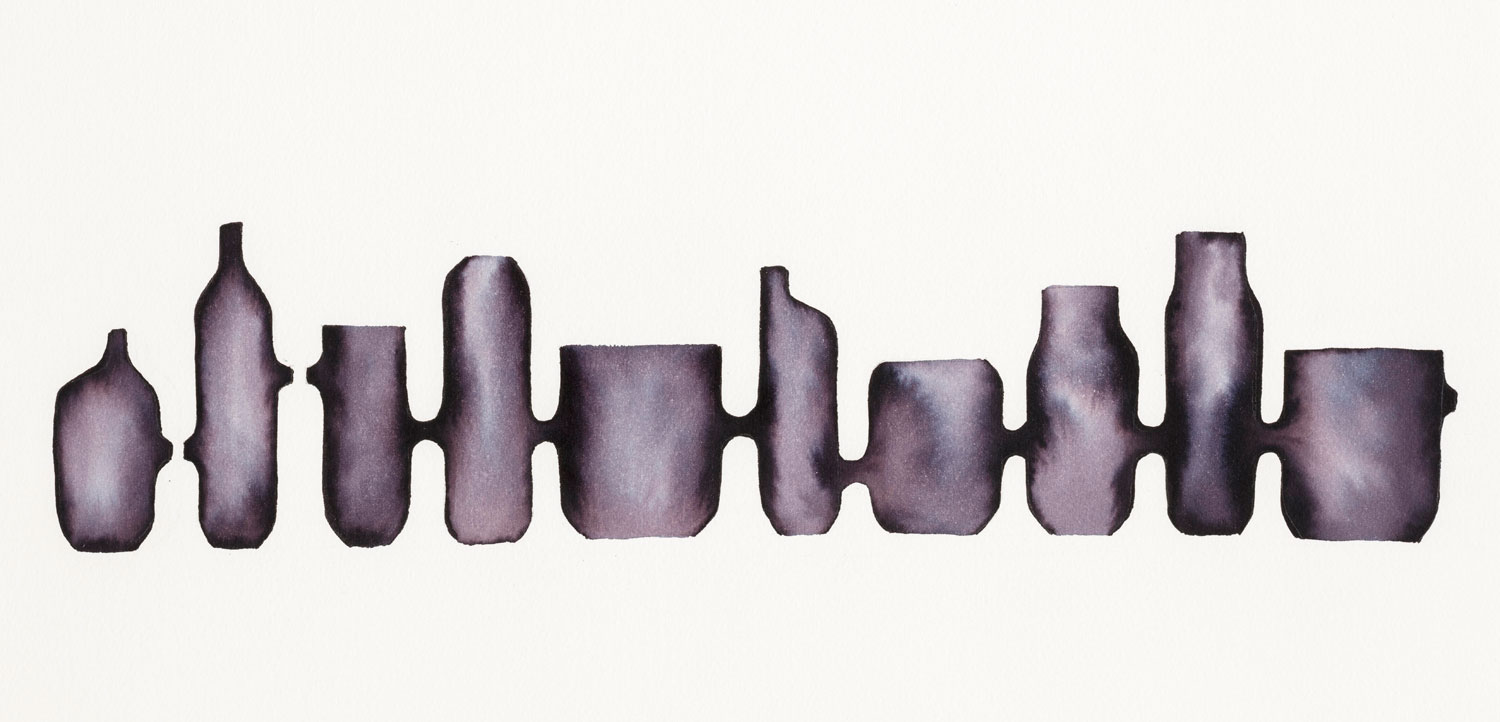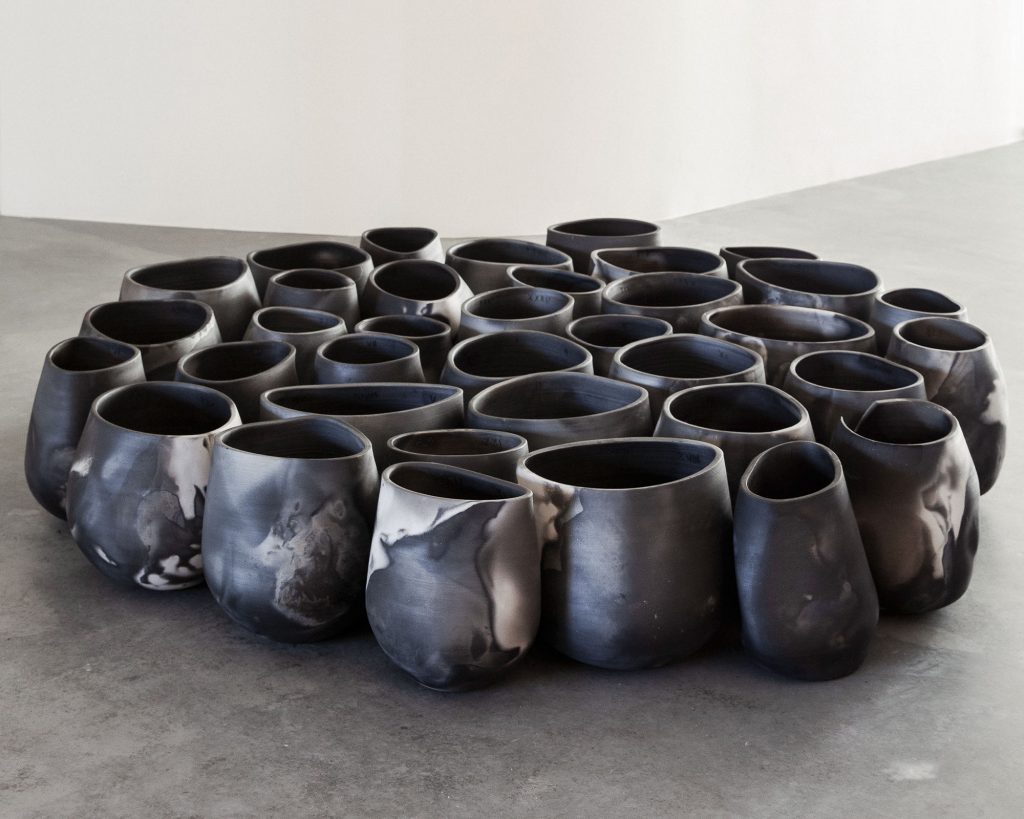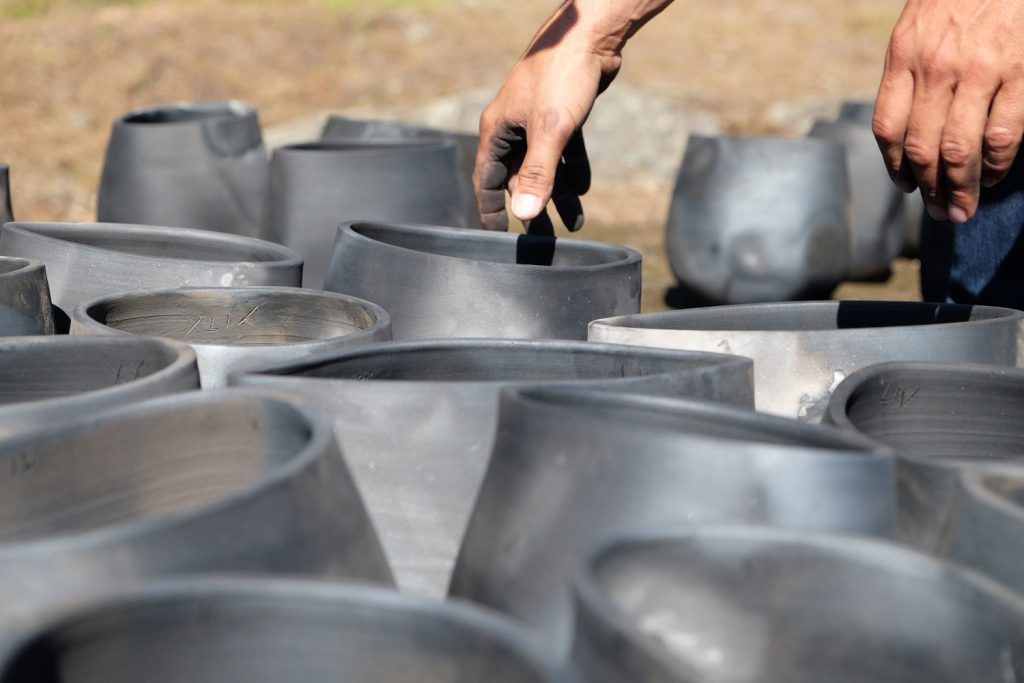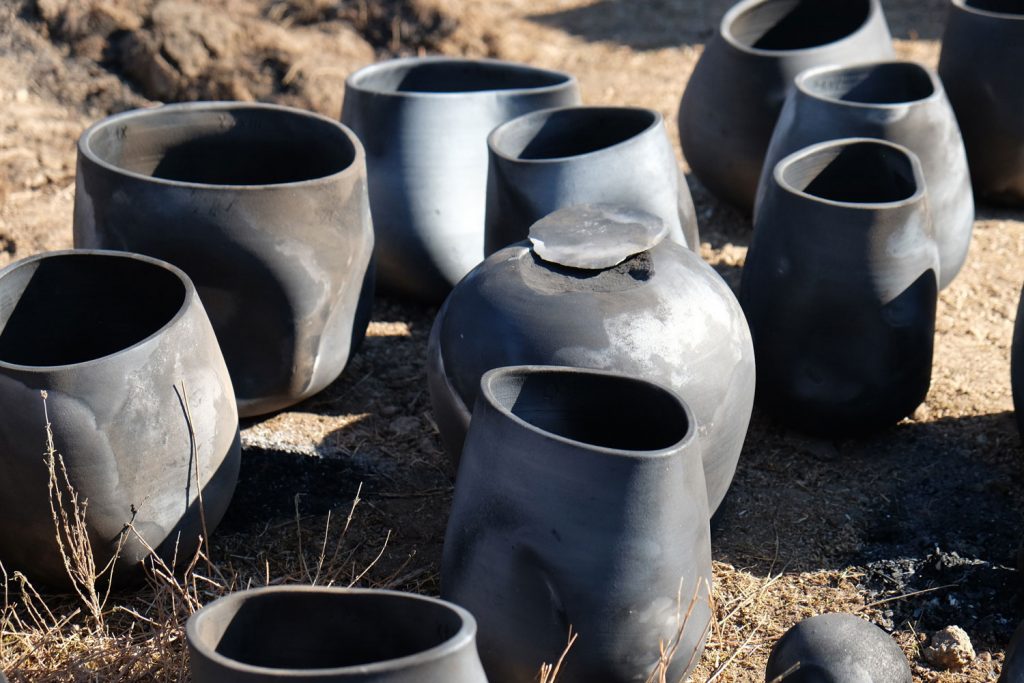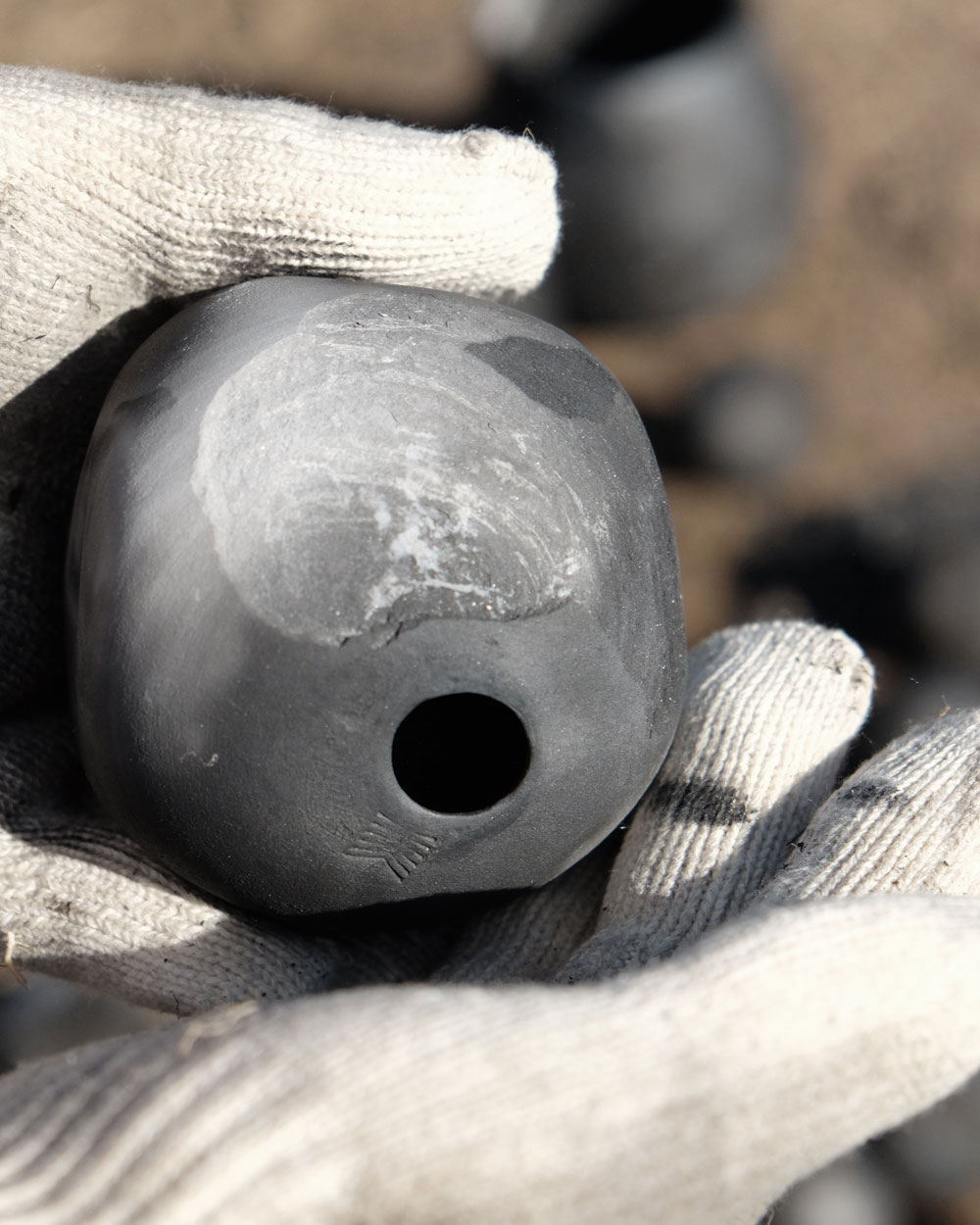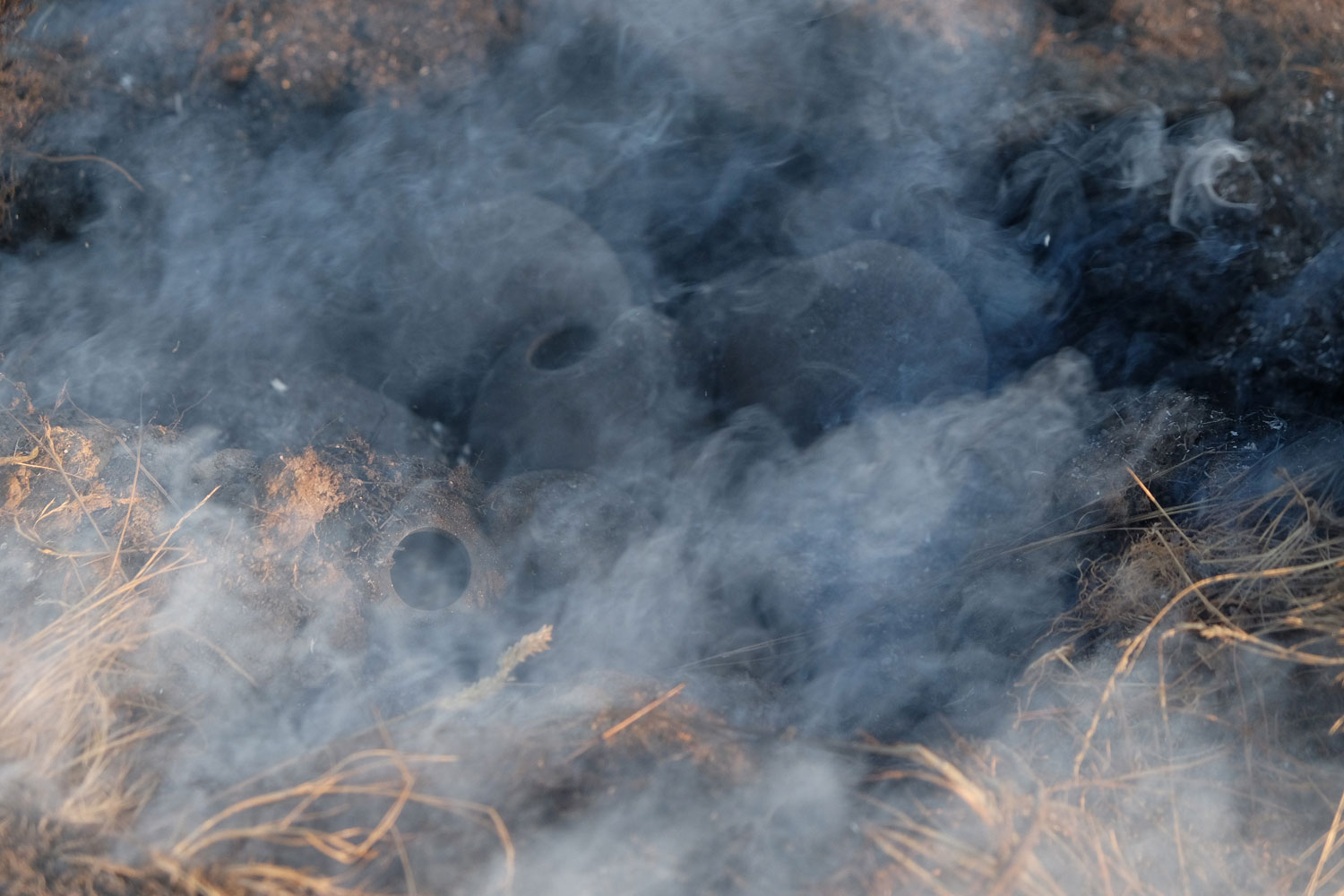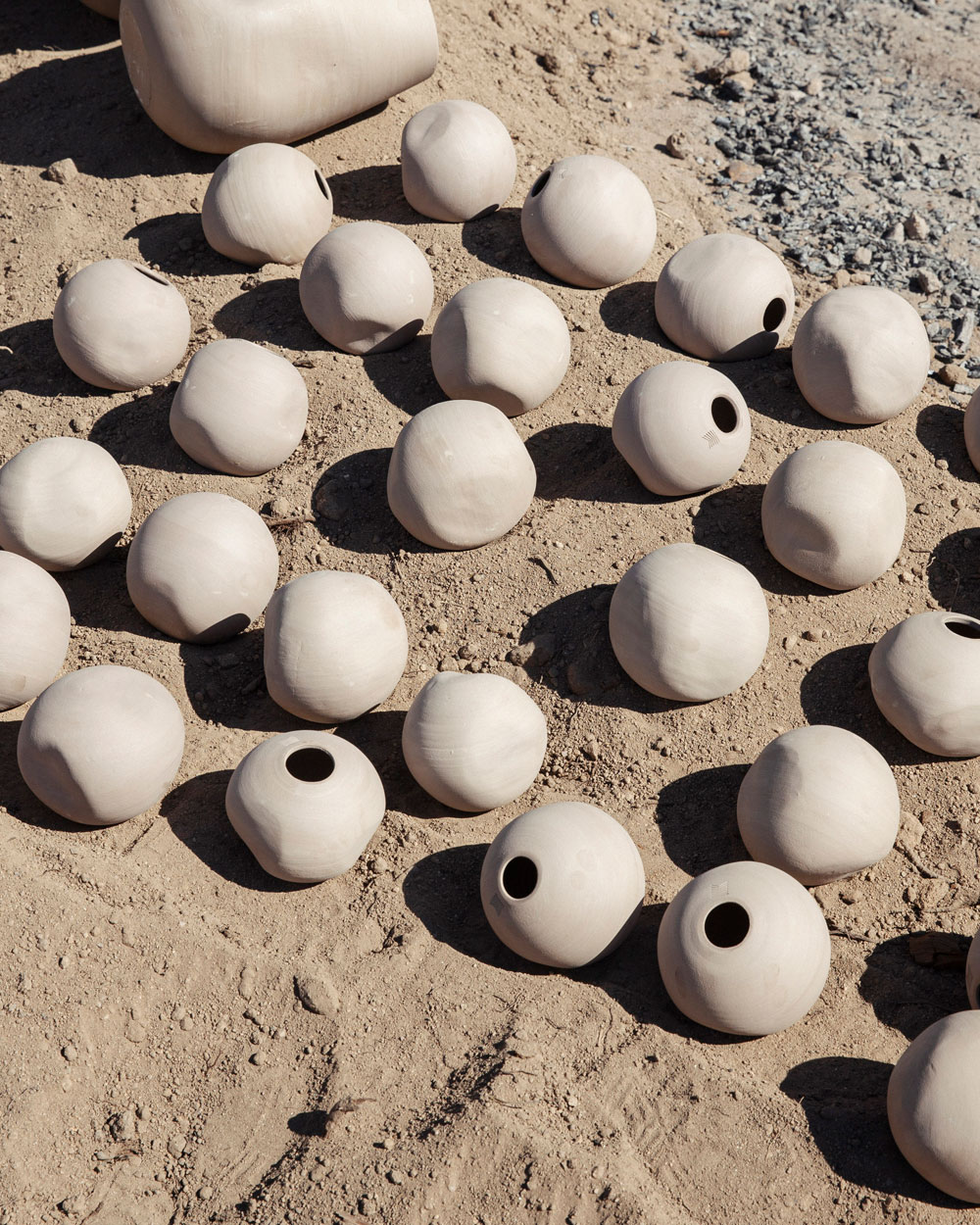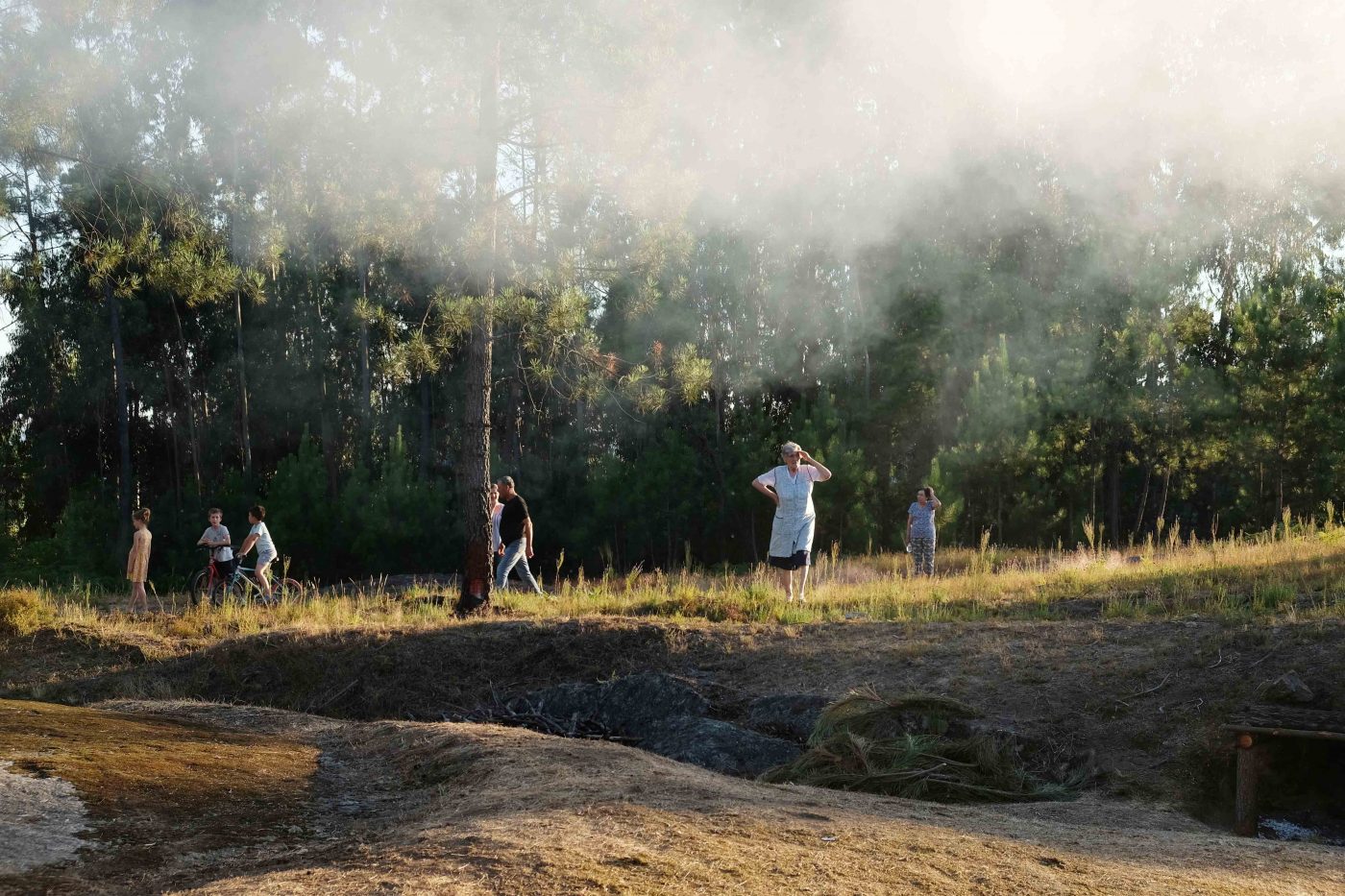/Sep
2020
Barro Negro - A collection that connects materiality to senses, to earth and fire, to food, to smell, to touch and to light.
Why black ceramics?
—
I was drawn to the immersive black ceramics, Barro Negro, on our visit to the Portuguese Ethnology museum archives in Lisbon. The material has a depth to it, the way it absorbs the light and registers the process of its creation, it looks like charcoal but with a density that gives it a curious strength. Digging deeper I found out about the Soenga, an ancient pit firing technique still practiced today in Molelos village. During this annual event, the artisans and village population come together to keep the tradition alive. These distinguishing characteristics in material, process and community are what made me decide to learn more about this craft.
Describe your co-creation process.
—
I sought out Alexandra Monteiro (Xana) and Carlos Lima, two master artisans in this village. It was an interesting ping-pong between my vision and what Xana and Carlos wanted and were able to do within the technical restraints of the material, tools and process.
For the very first meeting, I came with drawings and conceptual ideas of what to develop with barro negro. They studied them carefully but were resistant
They are artists and do projects because they are interesting for them, projects that interact with what they are creating and developing through the evolution of their own bodies of work. For Xana and Carlos it is a lot about entering into their world and them into mine. We had to understand each other’s stories, where we came from, how we create.
That first day, we had lunch together, sharing food and wine, starting to open up to who we all were. They told me “If you want to work with us, you need to spend time with us.”
And so, the collaboration began. Each step of the way, I travelled up with my team to work with them, hands in the clay, we had to have this personal exchange in developing the pieces, understanding the thought process as well as having the technical interaction regarding how the pieces would be made.
Connection is the main concept of the collection, could you speak about this?
—
It’s very simple; connection was the clearest way for me to portray the sentiment of the Soenga, the artisans and community coming together to celebrate this tradition. It really is a lot of laborious work. I immediately wanted to create a tribute to these people in their togetherness. One Village, one idea and one moment.
How did the collection evolve?
—
By learning from mistakes and chronological flow of the project.
I initially thought of and made ink drawings for much more complex shapes. I took these to share with Xana and Carlos, they explained to me that their work is done on a potter’s wheel and that the pieces needed to be informed by this tool. I had to redesign with the circular gesture, the turning wheel, this motion from which the pieces are pulled and formed. From this and the idea of connection came the first typology of the collection: the Dry Vases.
The second, the Lights, are from the local landscape, the boulders, so familiar to me, so much like the pink granite rocks of my childhood. I was really drawn to work with these volumes and the spatial relationships they generate. The lights are the exception to the rule of the circle, they were impossible to make on the wheel due to the complexity of their shapes and so I sculpted them and made plaster forms. This is not something that Xana and Carlos usually work with, but in this case, it was necessary, so we found a way. The texture on the inside is a direct reference to the materiality of the local geology. Together we selected stones from their garden that they had collected over time, we experimented and found the right textures to press into the inside of the molded clay.

The vases and the lights had to be fired in the kiln; they are technical pieces that require precision and sharpness. Needless to say, I also really wanted to create some pieces that were fired the traditional way in the Soenga, after all, initially that was what had drawn me to Molelos village.
And so, it was that the Soenga Momentum composed of vessels and perfume diffusers was designed. Pieces inclined to interconnect and interact whilst they are being cooked. As they have to be piled and nested together in the dome of peat and pine and flames, the deformations that naturally occur are part of the idea. The moments of connection between each piece in the unified group, determined by how they are placed together to be fired, gives way to alterations through contact. The movement between the pieces that occurs naturally during the Soenga leads to the uniqueness of each, markings from that specific fire, in that specific group, of that specific time.
The Vessel shapes are inspired by traditional vessels, here envisioned specifically as blank canvases, unadorned, they gain their identities through the Soenga. If one breaks, as some inevitably do, they remain present in their absence due to their influence on the others.
The Perfume Diffusers were born of material, environment, and sensations. I wanted to create something that was immersive, to bring people, to share with people, the experience I had there. I wanted to share this collection through all the senses, through something different than touch and vision.
On our first visit we woke up really early to leave at 6am and take photos of the landscape. There was a dense fog and we couldn’t see anything, anyhow we continued to drive up towards the top of the mountain, we actually drove through the fog that became this undulating sea of clouds as we rose above it. When we arrived to the top, the sun was shining in a superb blue sky and it was a beautiful morning. This experience was such a strong moment of atmosphere. Because of the porousness of the material, the distinct atmospheric experiences in the powerful surrounding mountains and the smoke, the flames and the earth of the Soenga, perfume diffusers resonated as a medium through which to explore and share the full sensual experience of this place.
Through the senses and emotions, we can travel. The Barro Negro collection is truly made in situ.
